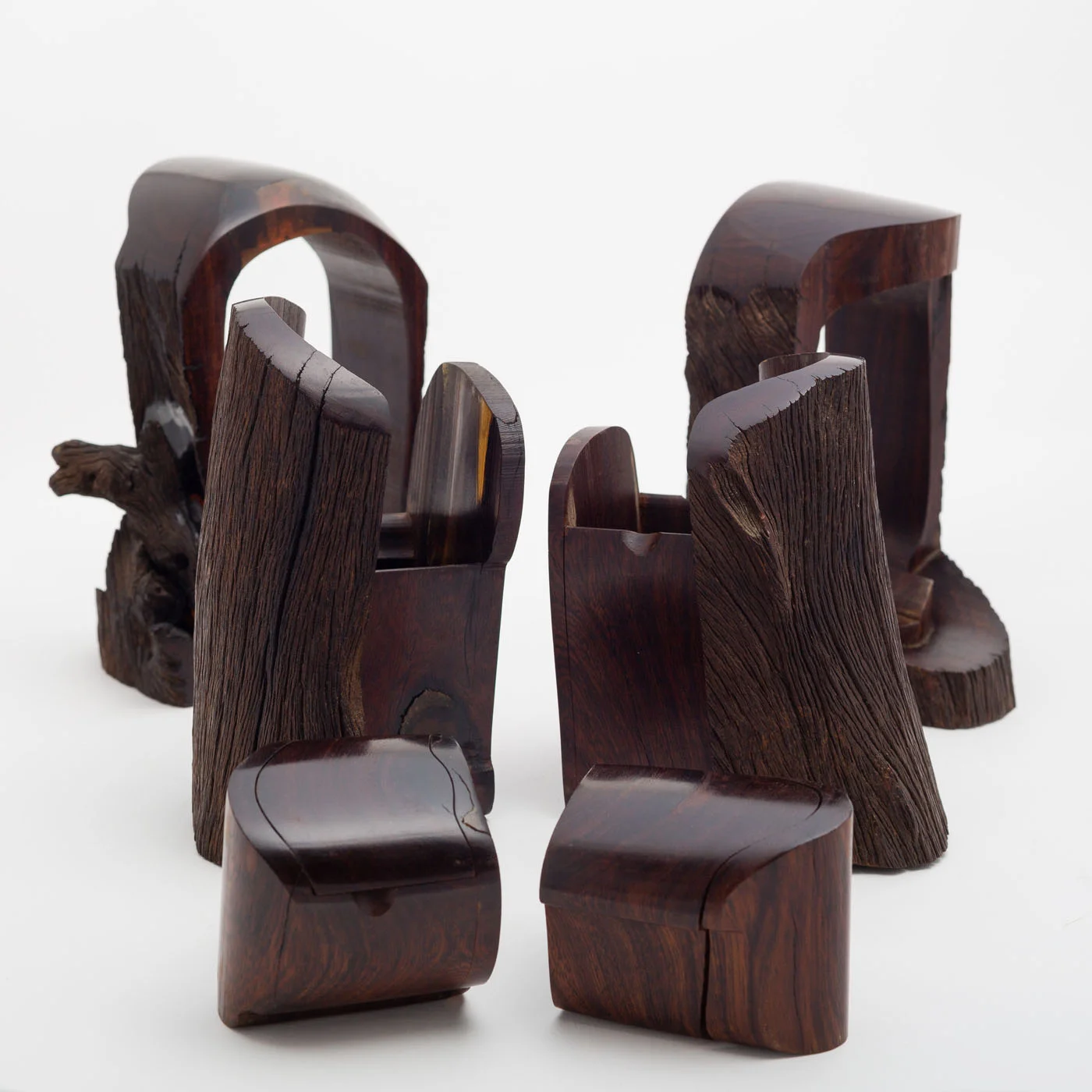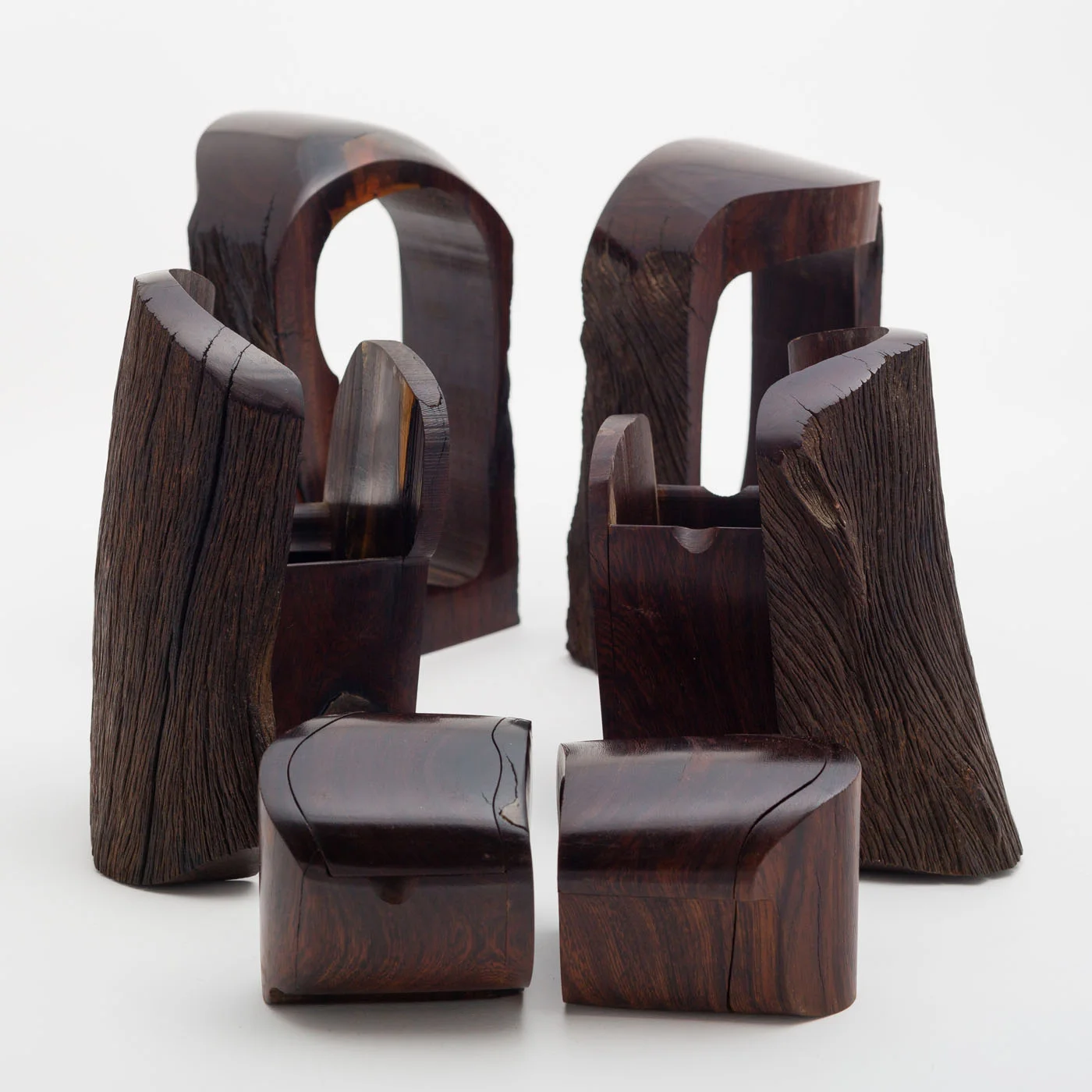Raymond Pelton Stash Box Bookends
Raymond Pelton Stash Box Bookends
Designer: Raymond Pelton (born 1944)
Item: Ironwood Stash Box Bookends
Manufactured by: Raymond Pelton (American 20th Century)
Country of origin: United States
Year made: 1977
Materials: Ironwood and clear polymer resin
Dimensions: 6 ¾” x 4 ½” x 4” and 6 ¾” x 3 ¼” x 5”
Description: These exceptional and rare stash box bookends are made of very heavy Ironwood. We have seen a large number of trinket or stash boxes, also referred to as Limboxes by this artist from Hawaii, but we have never seen a pair of bookends by him. Additionally, his work in Ironwood is very rare as he usually worked in soft woods. Each bookend has multiple hidden compartments within themselves as shown in the photos. These were beautifully finished by Pelton. An ingenious design, very high quality craftsmanship and quite functional for storing jewelry. These are much more intricate and complicated than the usual boxes you will find by Pelton, which usually only have one or two compartments and sell for very modest sums.
His work from the 1970s is becoming sought after as part of the American Studio design movement. A Pelton stash box auctioned in 2007 at Los Angeles Modern Auctions sold for $1,225. Pelton’s work was also shown in 2010 at the Reform Gallery in Los Angeles in an exhibition on American Studio design. We have seen one large important work selling for in excess of $4,000. His son has a blog collinpelton.com with more information about the artist. Each is marked with the Pelton brand on the bottom, dated 1977, the number 175 and on one is incised “Ironwood” and then one has the letter “A” and the other letter “B” and some additional coding.
Condition: Excellent. It appears the artist used some type of clear polymer resin when building these bookends to fill in some uneven spots, to secure the limb, make them flush with one another as bookends, seal the wood and to create a smooth shiny flat surface where the bookends would hold up books. He did this so well that it is hard to even notice in natural daylight, because the natural wood grain comes through the resin, but the flash from the photographer helps show it. These are not repairs, but integral to the construction.
These are heavy bookends with many small seperate pieces that require individual wrapping and and thus slightly higher shipping costs.








